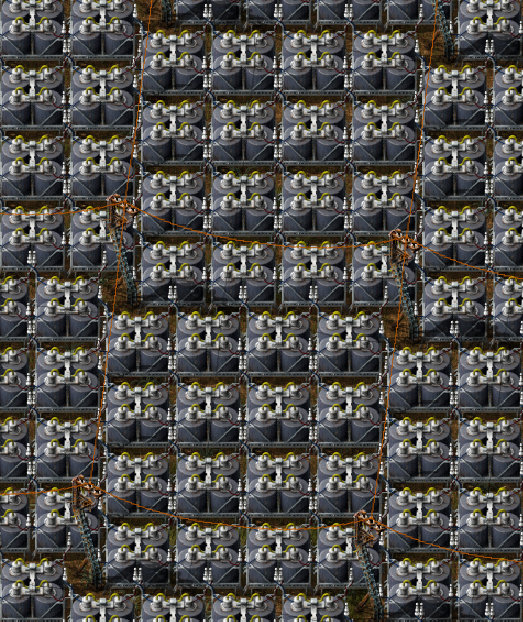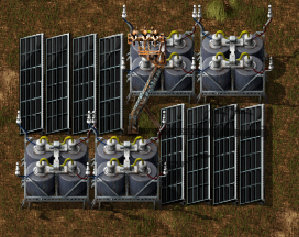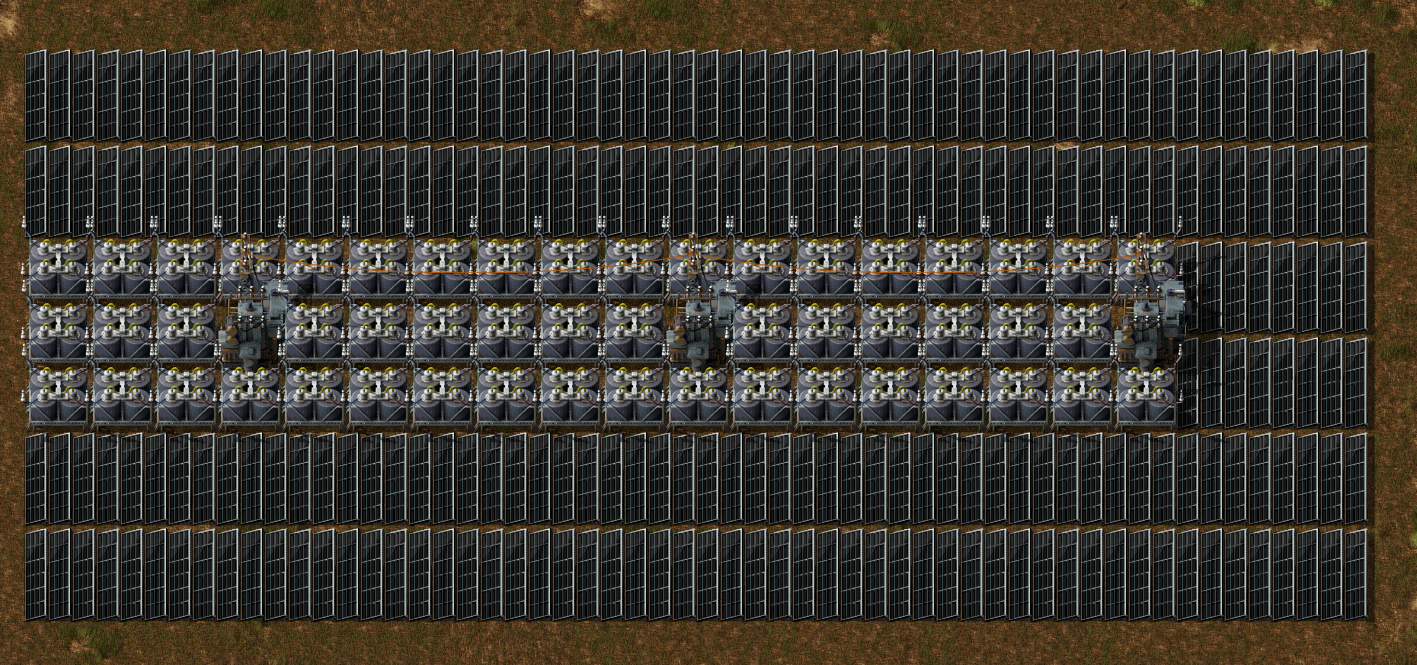After having going through various iterations of my 48x48 design, I think I can make some definitive statements about the efficiency of various solar strategies. The TL;DR is this:
the most space efficient setup is to mix solar panels and accumulators together.
For a pure solar layout, the best we know of (probably the best possible) was listed up-thread: one pole each at the corners of a 2x3 block of solar panels. This works out to 2*3*9=54 usable squares per 55, or an efficiency ratio of 98.18%.
For a pure accumulator layout, the best layout I know of looks like this:

- Tiled Accumulator.jpg (165.36 KiB) Viewed 11279 times
That's one pole per 4x4 block of accumulators, or 64 usable per 65 total, for an efficiency ratio of 98.46%.
Those are pretty good numbers, although you have to consider that they're not square layouts, and you can't even put them alongside each other because their off-axis tilt angles aren't quite the same. But by mixing panels and accumulators, we can do even better,
and in a square layout. The basic building block is this 5x7 shape:

- Basic Block.jpg (29.93 KiB) Viewed 11279 times
When you put it end-to-end, you can alternate its orientation, which makes the pattern more appealing and makes it easier to lay out by hand.
Where it really shines is that there's room on both the top
and the bottom to stack another row of solar panels or accumulators.

- Full Block.jpg (259.61 KiB) Viewed 11279 times
This makes the rows too widely spaced to connect, so you have to connect them once at the end, but the overall gain makes it worth it. By stacking two rows of solar panels, you have 76 usable out of 77 tiles, for a ratio of 98.70%. Changing one of the rows to accumulators lowers the efficiency a little to 69/70 = 98.57%. Either way, both of these are comfortably above what can be done with a single-type tessellation.
 . I personally just place solar panels in 2x5 blocks, with lanes running on both sides. Also in a lot of situations I don't have much free space since I don't want to remove too much forest (makes green factory more green
. I personally just place solar panels in 2x5 blocks, with lanes running on both sides. Also in a lot of situations I don't have much free space since I don't want to remove too much forest (makes green factory more green  ).
).